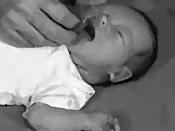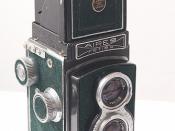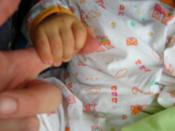Innate behaviors and reflexes can also be called "instincts", appearing spontaneously to perform specific functions. These innate behaviors are programmed in the genes and are not typically modified by experience (Peters, 2004). All humans experience innate behaviors but with time, may be controlled. For example, all people must expel waste from their body, in other words known as urinating and defecating. Although some people may have a medical problem that enables them from releasing this waste, it is a natural unavoidable behavior. With time and age, humans are able to control this behavior yet all must participate in this bodily function. Another example of an innate behavior includes eating. When babies are born, it is instinctive for them to want nourishment soon after birth. Humans continue through life eating for energy, nourishment, and many times comfort. A last innate behavior discussed will be breathing. When a baby is born, its mouth and nose are cleaned out so breathing can begin.
Humans do not need to concentrate on this behavior as it is controlled by our brains.
When a person responds to a stimulus in which a physical response is triggered, it is referred to as a reflex. An example of a reflex is when a person turns their head to investigate a loud noise. This reflex is also called the Moro reflex when a baby arches their back and extends their arms in reaction to a loud noise (Bee, p.84). Another example of an innate reflex is called the grasping reflex. When an infant's hand is stroked or your finger presses the palm, the infant will grasp your finger (Bee, p.84). Although this reflex disappears at about 3 to 4 months old, it can be observed in instances of adult hood. With most people, if an item is...


